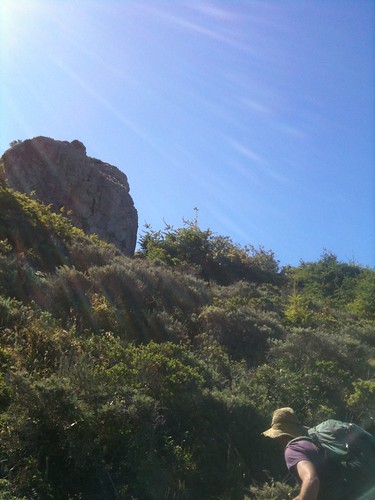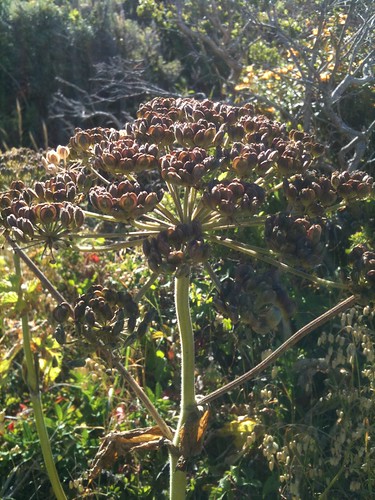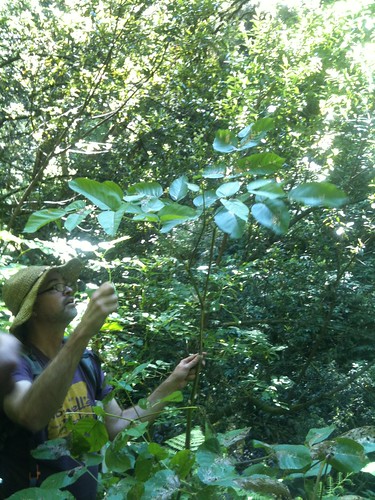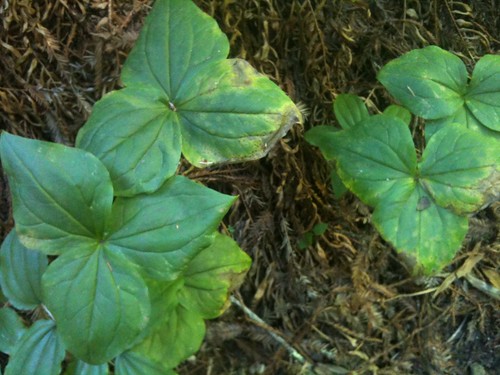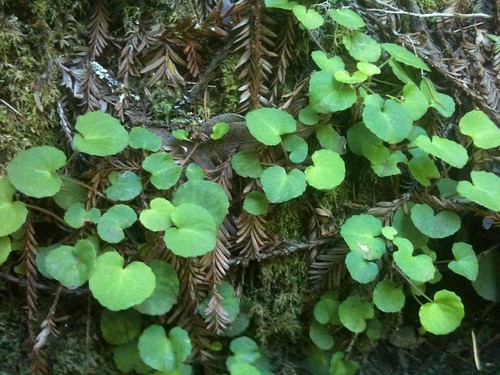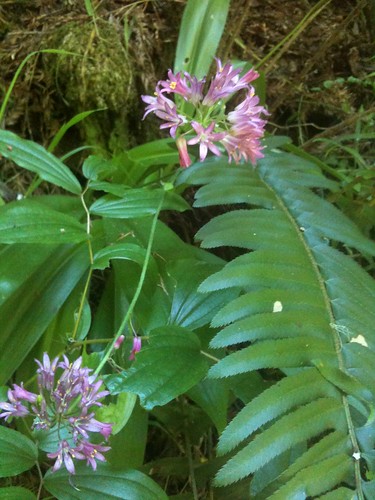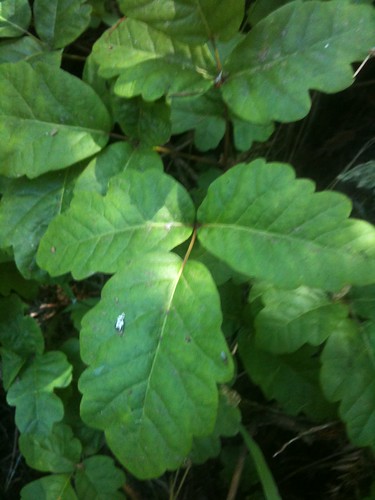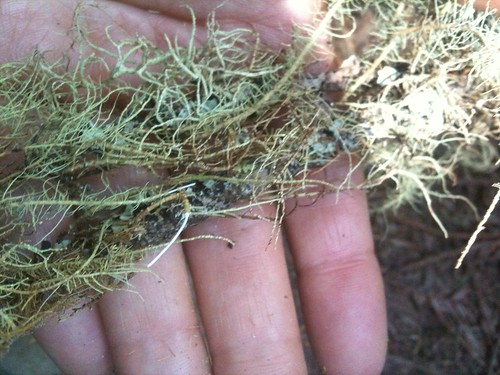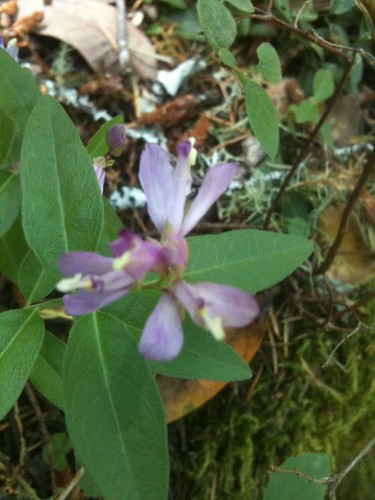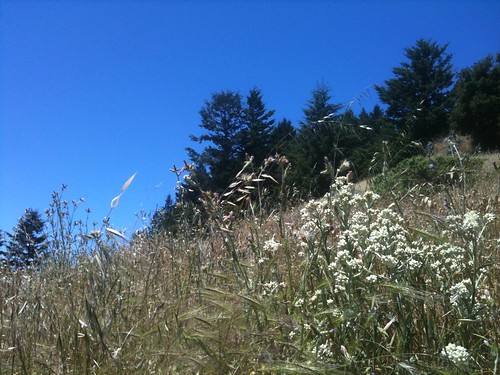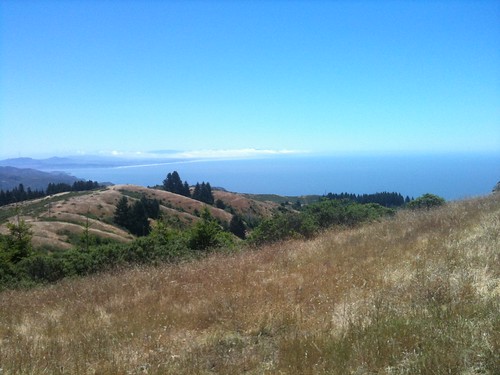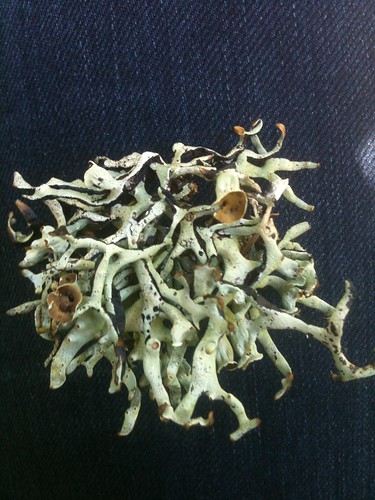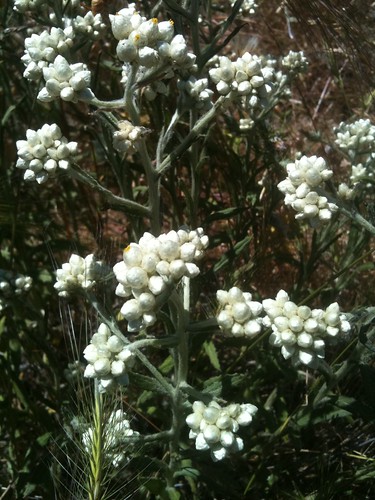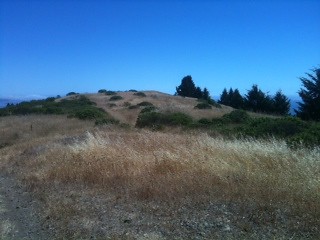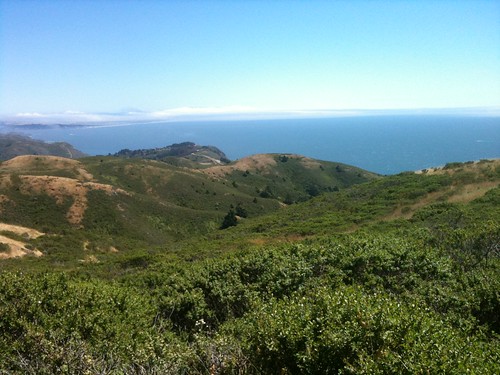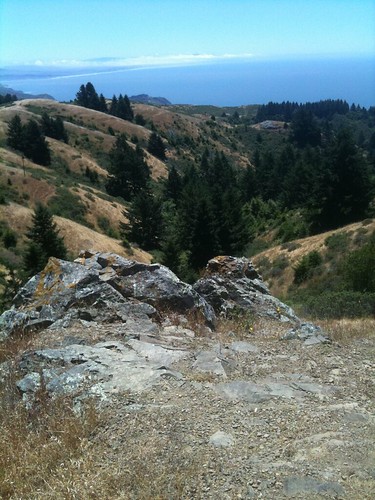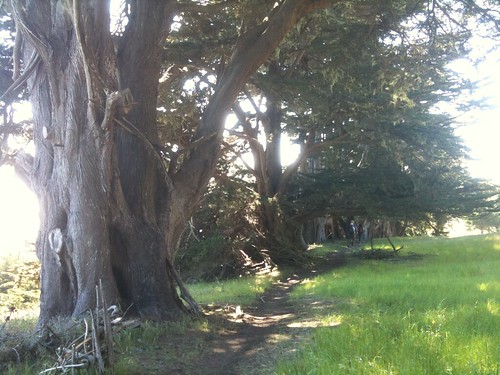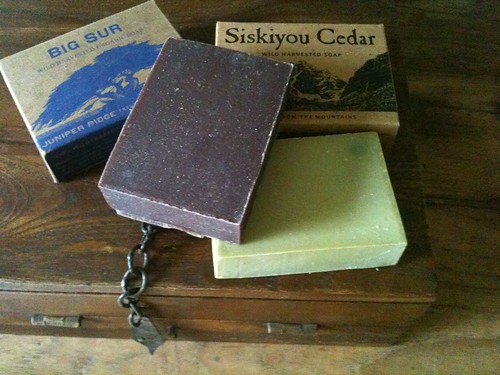Steep Ravine Soap
 Steep Ravine Soap was inspired by the same trail I hiked last Thursday with Hall Newbegin on one of his Wildflower Hikes.
Steep Ravine Soap was inspired by the same trail I hiked last Thursday with Hall Newbegin on one of his Wildflower Hikes.The soap is redolent of citrusy Douglas Fir (Pseudotsuga douglasii), with its crisp evergreen freshness accompanied by Redwood (Sequioa semprevirens) and California's Bay Laurel (Umbellularia californiac) - a warm, spicy evergreen tree that is 100 times more potent than the Mediterranean variety. A little whiff of that will bring you back to reality with a piercing nasal pain that's worse than horseradish!!!
I'm not kidding!
You got to stay away from it when you smell it, and than you can enjoy it's spicy, warm qualities which have more depth than the regular bay you're familiar with from cooking, but still bears a resemblance to it.
The soap is the usual high quality cold-processed bright green bar that contains the resins and infusions from the plants themselves, not just their essential oils. The saponified oils of palm, coconut, jojoba and olive oil produce a high-lather soap that's good enough to use in shaving, and with a strong scent that's perfect wake-up-call in a morning shower and a relaxing way to end the day if that's when you prefer to bathe. They can also make a great hand soap, and you can be sure that plenty of bacteria will be washed away with all the essential oils that are packed in this soap.
The beautiful packaging (designed in house, by the way) is made of craft paper, and has an etched impression of the trail's rocks, creek and redwoods, and includes an authentic background story and blending notes, that make a good read as well:
Scent notes include redwood, bay leaf, oakmoss and sea mist. And that's what you will enjoy if you hike up (and down...) Steep Ravine. I love the descriptions on each Juniper Ridge product. They are real and evoke true memories from hikes in the wilderness - in this case, a winter hike, picking mushrooms and staying at a cabin on a rainy night. After being there myself this summer, and smelling these plants in their natural habitat, I can enjoy bathing with Steep Ravine soap even more.


